Akita
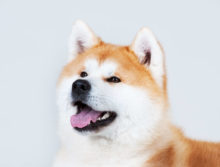
Akita breed is originally from Japan. Also known as Great Japanese Dog, Japanese Akita, American Akita.
Breed information
| Popularity |
|
| Name | Akita |
| Other names | Great Japanese Dog, Japanese Akita, American Akita |
| From country | Japan |
| Standards | |
| Breed groups | Working (AKC),Herding (UKC) |
| Type | Purebred |
| Size | Large, Giant |
| Life span | 10 - 14 years |
| Temperament | alert,courageous,dignified,docile,friendly,intelligent,responsive |
| Height female | 24-26 inches (61-66 cm) |
| Height male | 26-28 inches (66-71 cm) |
| Weight female | 70-110 pounds |
| Weight male | 85-130 pounds |
| Colors | black,fawn,red,white |
| Litter Size | 3 - 12 puppies |
| Puppy Price | Average $800 - $1200 USD |
Akita breed image
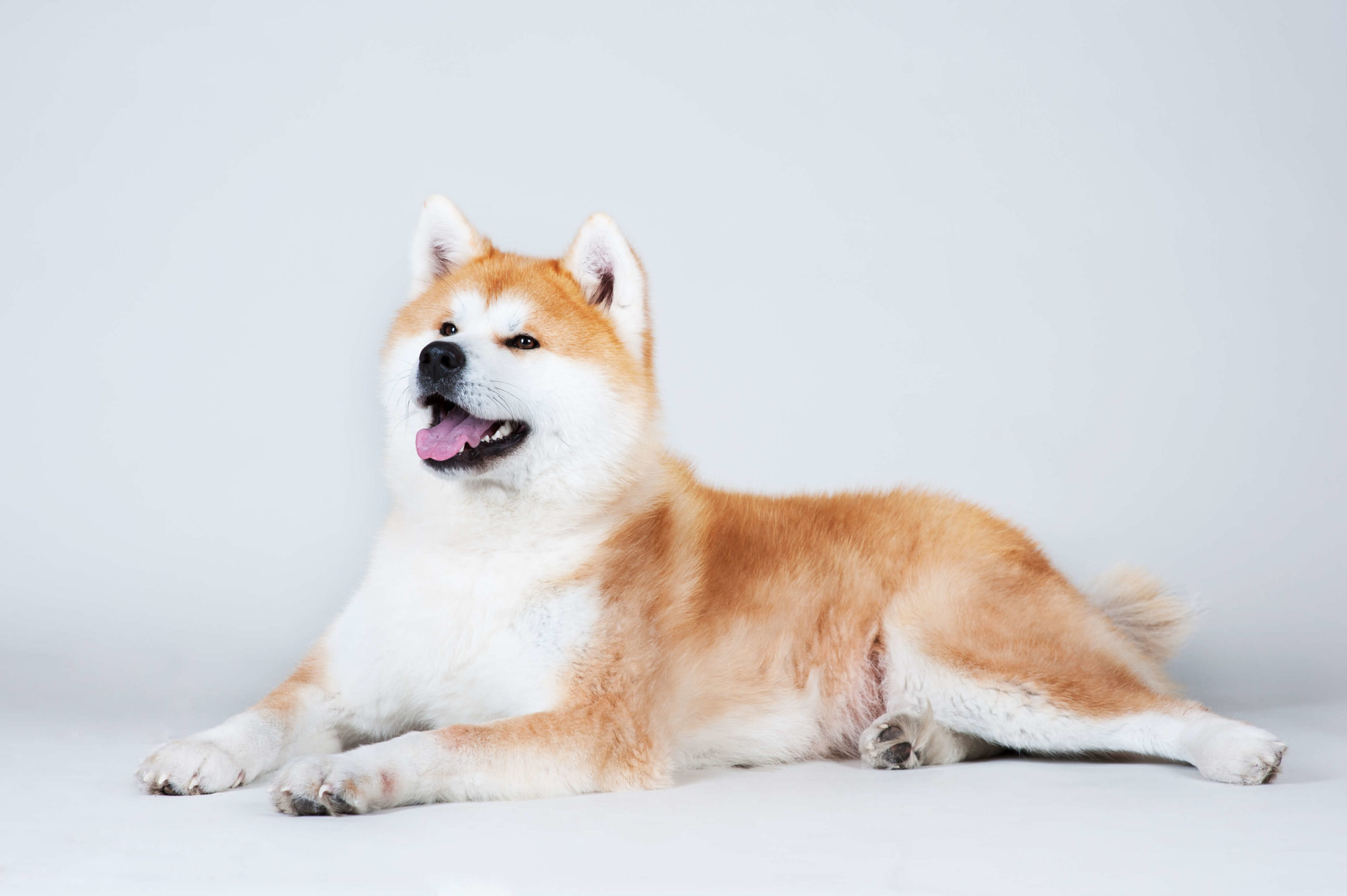
Akita Pros and Cons
There are 1 pros and 7 cons of owning Akita.
| Pros 👍 | Cons 👎 |
|---|---|
| Normally doesn't have problems with health | Kids unfriendly |
| Doesn't like other dogs | |
| Tends to shed a lot | |
| Difficult to groom | |
| Makes a lot of noise | |
| Needs a lot of exercises | |
| Not hypoallergenic |
Breed Characteristics
| Sensitivity Level |
Low-sensitive
High-sensitive
|
High-sensitivity dogs can be deeply affected by their owner's actions. If you shout loudly at the dog, ignore it, or if your child pulls its tail, it may take offense. On the other hand, low-sensitivity dogs, often referred to as 'tolerant' dogs, handle these situations more easily. If you're an emotional person, have a busy lifestyle, sometimes neglect your dog, or have young children, we don't recommend getting a high-sensitivity dog. |
|
| Kid-Friendly |
No-Kid-Friendly
Kid-Friendly
|
Kid-friendly dogs are highly tolerant of children's behavior, including hugs and playful "games" like attempting to saddle them. They typically interact kindly and patiently with kids, making them great family pets. Not Kid-Friendly Dogs - Dogs in this category do not tolerate such behavior from children and may react negatively or even aggressively. Be cautious about bringing a not kid-friendly dog into a family environment. |
|
| Dog Friendly |
Low-friendly
High-Friendly
|
Dog-friendly characteristics vary widely, ranging from low-friendly to high-friendly. It's important to note that a dog's level of friendliness depends on several factors, and breed is just one of them. Dogs with high friendliness tend to be sociable and enjoy interacting with other dogs. They may happily play with other canines or simply remain calm and relaxed when in the company of other dogs. Conversely, dogs with lower levels of friendliness may exhibit different behaviors. They might be more prone to barking, trying to engage in fights with other dogs, or even attempting to run away from unfamiliar dogs or situations. Keep in mind that a dog's friendliness is influenced by their individual personality, upbringing, and experiences. So, it's essential to consider these factors when assessing your furry friend's social behavior. |
|
| Friendly Toward Strangers |
Not-friendly
Everyone Is My Best Friend
|
It's important to understand that a dog's behavior towards strangers is influenced by various factors, with breed being just one of them. A dog that is friendly toward strangers will typically exhibit pleasant behavior when your friends or visitors come to your home. They won't display aggression or attempt to attack them. Instead, they will likely be welcoming and sociable. On the other hand, some dogs may be naturally shy or even fearful of strangers. However, it's crucial to note that a dog's socialization plays a significant role in their behavior. Proper socialization lessons can help any dog become more welcoming to strangers, regardless of their breed. That said, if you happen to choose a breed known for its high stranger-friendly rating but don't invest time in training and socialization, the dog may still exhibit unfriendly behavior toward your visitors. Remember, a dog's behavior is a product of both their breed tendencies and their upbringing. |
|
| Amount Of Shedding |
No Shedding
Hair Everywhere
|
|
What's crucial to note is that the extent of shedding can vary from one breed to another. Some dogs shed consistently throughout the year, while others may have specific seasonal shedding patterns. There are also breeds that shed minimally, and in some cases, almost not at all. When choosing a dog, it's essential to consider your personal preferences and standards regarding shedding. Your choice should align with how much you're willing to handle in terms of grooming and cleaning to keep your home and clothes free from excessive dog hair. |
|
| Easy To Groom |
Easy
Hard
|
|
Some breeds are low-maintenance and can be brushed quickly and easily. Others may need regular clipping, grooming, and bathing to keep them looking their best. When choosing a dog, it's important to assess how much time and money you're willing to invest in their grooming needs. Your decision should align with your preferences and your commitment to providing the necessary care for your furry friend. |
|
| General Health |
Need more attention to health
Healthy as an ox
|
|
It's important to be aware that some dogs may face health challenges due to irresponsible breeding practices. One example of such health issues is hip dysplasia, which is a genetic problem. However, it's essential to understand that not every dog of a specific breed will develop these health issues, although they may be more prone to them. When adopting a puppy, it's a good practice to gather information about any genetic illnesses associated with the breed. For more detailed information, you may also want to consult with a shelter or rescue organization, as they can provide insights into the physical health of the puppy's parents or siblings. |
|
| Easy To Train |
Self-Willed
Eager to Please
|
|
It's worth noting that some dog breeds are more trainable than others. For instance, certain breeds may quickly grasp and establish associations between words like 'stay,' corresponding actions (such as staying in place), and the resulting rewards. On the other hand, some breeds may require more time and attention during training. Dogs are highly intelligent animals, but they often like to understand what's in it for them when they follow your commands. This is where games and rewards can be valuable tools in training and motivating them. |
|
| Intelligence |
Low
High
|
|
Different dog breeds excel in specific tasks and exhibit varying levels of intelligence, concentration, and quick decision-making abilities. For instance, breeds bred for their intelligence, like Border Collies, may excel in activities such as herding livestock. These dogs require more mental stimulation to thrive compared to breeds designed for physical endurance and running. Understanding your dog's specific needs is essential to ensure they are mentally engaged and don't engage in unwanted behaviors like chewing and digging. To meet these needs, consider interactive toys and activities, such as obedience training for dogs in need of mental engagement, or search and rescue activities for those with high activity levels and keen senses. |
|
| Tendency To Bark Or Howl |
Only To Alert
Avid singer
|
|
It's important to understand that vocalization varies between dog breeds. Some dogs are naturally more vocal, and they can bark and howl at different pitches. For instance, consider the hound, known for its distinctive barking and howling. You'll need to decide if the sound of their vocalizations might become bothersome or if you find it somewhat musical. Additionally, if your chosen breed has a history of hunting, they might constantly chase and howl at nearby wildlife. If you're looking for a watchdog and your dog is alert, it may bark at everyone it encounters. These factors are essential to consider when selecting a dog breed, especially if you have neighbors or are subject to any noise restrictions. |
|
| Energy Level |
Couch Potato
High Energy
|
|
A dog's energy level is often influenced by their breeding, as some breeds were designed for specific tasks like herding livestock or retrieving game for hunters. Dogs with high energy levels will require plenty of interaction and exercise. They tend to be more active and enjoy activities such as playing, running, tumbling, and exploring new smells and sights. On the other hand, some breeds are low-energy and prefer lounging on the couch with you, taking naps, and enjoying Netflix marathons. When choosing a dog breed, it's essential to consider your own activity level and lifestyle. Select a breed that aligns with your preferences and can comfortably fit into your daily routine. |
|
| Exercise Needs |
Low
Need a lot
|
|
Different dog breeds have varying requirements when it comes to physical activity. Some breeds may be content with a leisurely stroll in the evening, while others might crave several vigorous laps around the block. Their exercise needs are often linked to their original purposes, such as hunting or herding, which influence their energy levels. Dogs with high energy levels that don't receive adequate exercise may be prone to weight gain and may engage in behaviors like digging, chewing, and excessive barking. High-energy dogs tend to thrive when paired with individuals who are active, enjoy the outdoors, or have an interest in training their dog for competitions. |
|
| Potential For Playfulness |
Only When You Want To Play
Non-Stop
|
|
Dog breeds exhibit a wide range of personalities, and this includes their inclination for play. Some breeds are consistently playful and seem to stay in a perpetual puppy state of mind. In contrast, other breeds tend to be more serious and enjoy their moments of relaxation. When choosing a dog, it's important to consider whether the idea of having a playful companion excites you or if you prefer a more relaxed and laid-back dog. Additionally, factors such as the presence of children or other pets in your household should be taken into account. Another option to explore is adopting an older dog, which might be less demanding but still enjoys interacting and playing, providing a balance between playfulness and a calmer demeanor. |
|
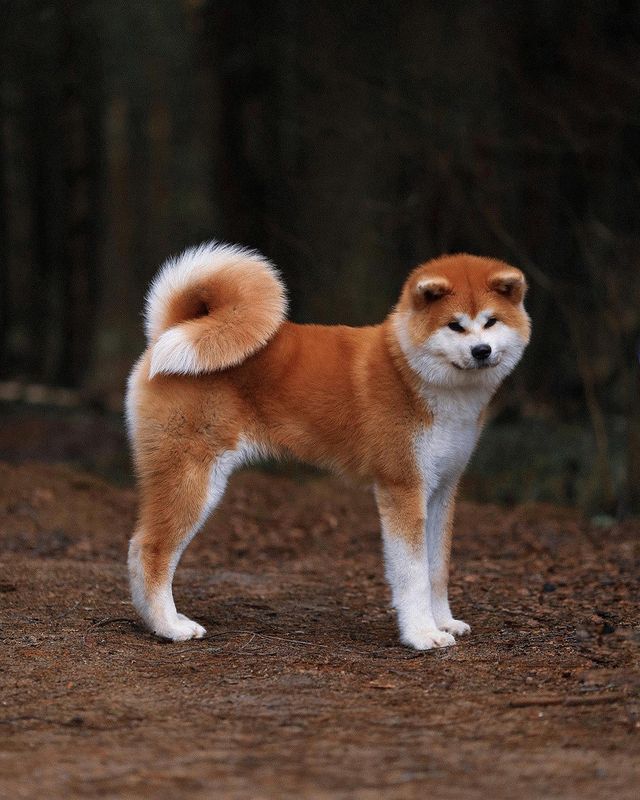
Basic moments
- Akita Inu doesn’t like other dogs, especially his own gender.
- Proper upbringing, long-term socialization, competent training are extremely important, otherwise the animal is able to grow up aggressive.
- They are noble and restrained, but only when they recognize the owner as the unconditional leader.
- Akita sheds strongly twice a year.
- Dogs feel good in the house and apartment, but they require frequent walks, physical activity.
History of the Akita Inu breed
According to information from ancient historical sources in Japan, the ancestor of modern representatives of the breed is the Matagi Inu (Matagi is an ethnic group of hunters, Inu is "dog"). Akita prefecture on the island of Honshu is considered the region of origin of Akita Inu. Matagi-inu and her ancestors served people as irreplaceable assistants in hunting, allowing them to hunt even very large or dexterous animals: Japanese macaques, bears, wild boars.
In the XII-XIII centuries, a new popular entertainment appeared in Japan - dog fighting. It became a cruel selection for these dogs, leaving only the strongest, evil and hardiest. In the 19th century, a wave of industrialization swept across the country, many residents moved, the number of crimes increased. Because of this, the Matagi Inu were retrained to guard property. At the same time, bullmastiffs and mastiffs, Great Danes were brought from Europe to Japan, reviving the tradition of dog fighting. Increasingly, the Akita was crossed with these dogs in order to get more aggressive and larger dogs.
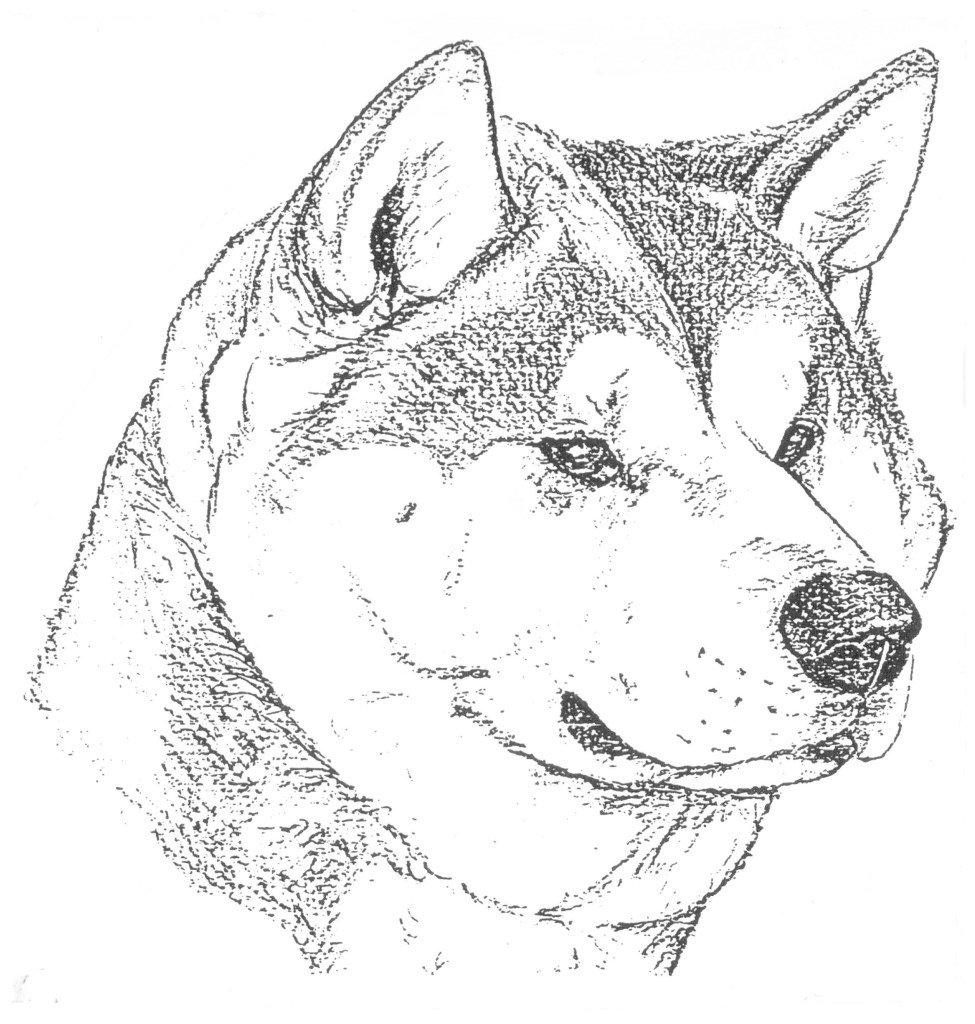
This caused the concern of Japanese dog breeders, because the breed began to lose its features, so in 1931 Akita Inu were transferred to the status of a natural monument at the state level. Breeders actively engaged in the revival of the breed, selecting only its best representatives for breeding. In 1934, the first official standard was introduced, but over time it had to be adjusted. Around the same time, the breed received its modern name, and in 1967 a thematic museum was opened.
Akita Inu suffered serious damage during the Second World War - these dogs almost disappeared. They suffered from hunger, became victims of barely surviving people, their skins were used for clothing. At the end of the war, a government decree was issued to exterminate all dogs unsuitable for military use, since a real rabies epidemic began in Japan. For this reason, breeders hid some of the breed in remote settlements, breeding them from the Matagi Inu. Also, amateurs bred hybrid generations of Akita with a German shepherd to adapt them for military service.
After the war, a new round of restoration of the Akita Inu breed began, the greatest contribution to which was made by Morie Savataishi - it is thanks to him that these unique dogs have survived to this day. Purebred individuals had to be collected throughout the country, but this bore fruit. The American military liked the charming and proud Akita, so the breed was brought to the United States.
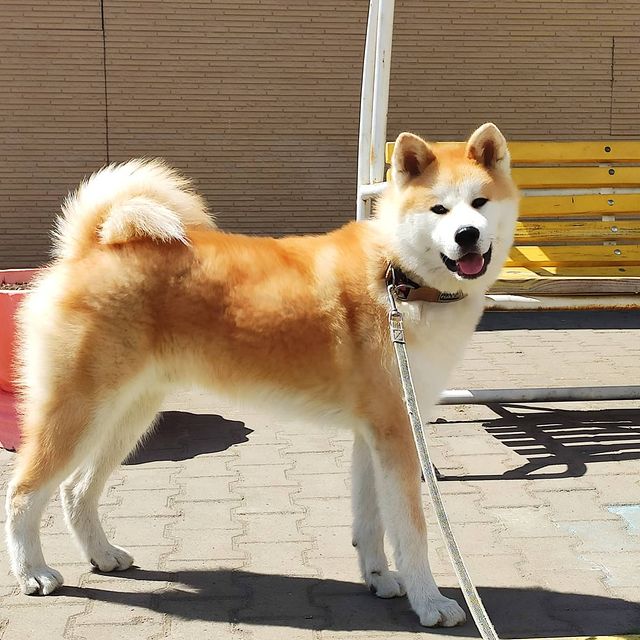
The appearance of the Akita. Weight, height
The American Akita is a huge dog. People actually compare him to a grizzly bear due to his size and looks. The American Akita’s weight is between 75-130 lbs (34-59 kg) for males and between 70-110 lbs (32–50 kg) for females. His height will range from 26-28 inches (66-71 cm) for males, and 24-26 inches (61-66 cm) for females. (According to the FCI). The coat is of medium length, with a developed, dense and soft undercoat. Often these dogs are compared to cats: their coat looks impeccable and there is no specific dog smell at all. The musculature is very developed and requires regular training.
Unlike the Japanese Akita, the American Akita comes with a bigger color variations such as:
- White
- Red
- Red Brindle
- Silver
- Silver Brindle
- Black
- Black Brindle
- Brown
- Brown Brindle
- Blue Brindle
- Fawn
- Fawn Brindle
Character and habits
Dogs of this breed have impeccable manners, which makes them wonderful family members. Patient and affectionate towards children. Very loyal to the owner. But, despite their loyalty and dedication, Akita Inu have a strong character and willpower, so training such dogs is not easy and needs to start at an early age of seven to eight weeks. This breed is best suited for experienced dog breeders, as an ordinary person may not cope with her temper and harm the dog.
Barking? Not going to happen with an Akita Inu
Who doesn’t hate hearing his dog barking in the middle of the night for no reason? The Akita, however, almost never bark. They rather have the “Strong and silent” personality. The only times an Akita will bark are when he really needs to. So, unless an intruder break into your house, prepare for a bark – free life and enjoy sleeping!
You should really keep him on a leash
If you always dreamed about a dog you could run free with in a park; Watching him playing with other dogs and fetching sticks, then maybe the Akita isn’t the perfect dog for you. You should never let your Akita Inu roam free around the neighborhood.
Make sure you don’t have any small pets at home
Due to his hunting instincts, the Akita tend to conceive small animals as prey. He will not show any sign of aggression, he won’t show his teeth or send any warning signal as well. He will attack. And not just attack to show dominance or who’s boss. He will go for the kill. However, Not all Akitas are extremely aggressive. If trained correctly, the Akita Inu can be a friendly dog to all animals.
Overall, the Akita Inu is a majestic creature. But with that being said, it’s not perfect. Consider the following before buying one:
Akita Inu PROs
- One of the most beautiful dog breeds
- Come with various different colors
- Almost never bark
- Center of attraction – A very impressive dog
- Doesn’t require a lot of exercise
- Loyal, calm and family oriented dog
- Excellent guard dog
Akita Inu CONs
- May show aggression toward other animals
- Hard to train, stubborn, bored easily and dominant
- Doesn’t like to stay alone at home for too long – Very attached to his owners
- Not suitable for off-leash walking
- Crazy amount of shedding
- Usually doesn’t like to play too much
After reading this article, if you are sure that an Akita Inu is the ideal dog for you, read next section about How to Choose an Ideal Akita Inu Puppy.
You can buy a puppy of this beautiful breed from breeders or in a specialized kennel, since only in this case you are guaranteed to get not only a beautiful dog, but also a friend with good genetics.
How to choose an Akita puppy?
When choosing a puppy, you should pay attention to the following:
- it is recommended to choose an animal from a small litter, where all puppies are of medium size;
- ask the breeder to familiarize you with the dog's pedigree; Find out about the availability of awards, as well as possible genetic diseases and allergies;
- you can learn more about the appearance and character of a future friend by getting to know his parents;
- a healthy puppy is mobile, has a good appetite, playful character, shiny eyes, smooth coat and clean ears.
Care
Akita Inu care does not require much effort. It can be kept both indoors and outdoors. You should not bathe your dog often, once or twice a year is usually enough. It is recommended to comb out wool a couple of times a week to reduce the amount of wool in the house. The main thing for this dog is daily walks.
Disease susceptibility
Akita Inu are robust animals with good health. They live on average about 12 years. However, they are still predisposed to a number of hereditary diseases. Among the problems with the musculoskeletal system, hip dysplasia is quite common. To detect pathology in the early stages, at the age of 6 months, it is worth showing the dog to an orthopedist.
Gastric dilatation volvulus (GDV) - a life-threatening situation associated with the structural features of the ligamentous apparatus of the stomach. It is important to remember that you cannot walk with these dogs immediately after eating, so any feeding should be carried out after the next walk.
Also common among this breed are eye diseases: eyelid volvulus, progressive retinal atrophy, glaucoma, cataracts. Therefore, the condition of the dog's eyes should be monitored regularly.
Video about Akita breed
Questions and answers about Akita
No, Akita's typical characteristics indicate that this breed of dog is not good for kids and doesn't make it a family pet. You mustn't leave the kid and dog alone!
The average life expectancy of a Akita is between 10 - 14 years.
If your Akita is pregnant, it is safe to assume that litter can have anywhere from 3 to 12 puppies.
If you purchase Akita from a breeder it can be much more expensive than a shelter. A purebred Akita costs between US$ 800 and US$ 1200 from a reputable breeder, but there are several advantages to doing so. First, a breeder will usually allow you to meet the parents to get a good idea about what the puppy will look like and behave. You will also see if the parents have any health problems. Breeders will also supply you with paperwork that documents your pet’s lineage.
Yes, they do a lot
Akita is moderately popular purebred dog in the USA. Akita have got #48 popularity rank in 2020, #52 in 2021 and #55 in 2022 by American Kennel Club (AKC).
No, Akita are not considered hypoallergenic dogs. If you are thinking about getting a Akita and have allergies, it's important to spend time with the breed to see how you react before bringing one into your home. This can help you make an informed decision about whether a Akita is the right pet for you, and if so, what steps you may need to take to manage any allergy symptoms.
- https://www.akc.org
- FCI standard
- Kennel club standard
- Wikipedia https://en.wikipedia.org/wiki/Akita_(dog)
Next and previous breeds by Popularity
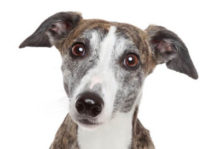
Whippet
Popularity: №54
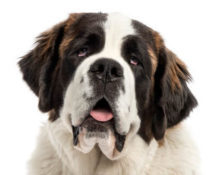
St. Bernard
Popularity: №56